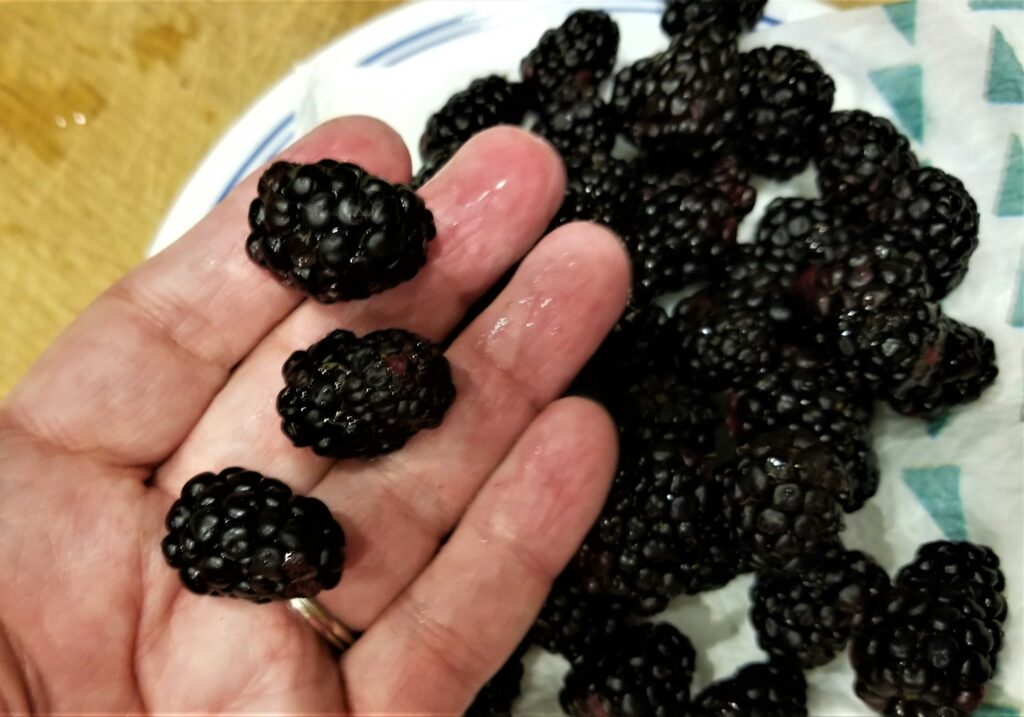Boysenberry: The Delicious Hybrid Berry for Your Garden

Are you looking for a unique and delicious addition to your garden? Look no further than the boysenberry! This hybrid berry, a cross between a raspberry, blackberry, and loganberry, is a true gem in the world of fruiting plants. With its rich flavor, versatile uses, and relatively easy care, the boysenberry is a must-have for any home gardener. In this comprehensive guide, we’ll explore the fascinating history, cultivation, and culinary delights of this wonderful berry.
The Boysenberry’s Intriguing History
The boysenberry has a captivating origin story that dates back to the early 1920s. It all began with Rudolph Boysen, a horticulturist from California who experimented with crossing various berry varieties. His goal was to create a berry that combined the best qualities of raspberries, blackberries, and loganberries.
Boysen’s initial attempts were unsuccessful, and he eventually abandoned his berry patches. However, in 1928, Walter Knott, a farmer and the founder of Knott’s Berry Farm, stumbled upon Boysen’s neglected berry vines. Recognizing the potential of these unique hybrids, Knott took cuttings and began cultivating them on his own farm.
Thanks to Knott’s dedication and marketing efforts, the boysenberry gained popularity and became a beloved fruit known for its large size, deep maroon color, and tantalizing flavor.
Why Grow Boysenberries in Your Garden?

There are numerous reasons why boysenberries deserve a spot in your garden:
- Delectable Flavor: Boysenberries have a distinctive, sweet-tart flavor that sets them apart from other berries. They offer a perfect balance of sugar and acidity, making them irresistible for fresh eating and culinary creations.
- Versatility: These berries are incredibly versatile in the kitchen. You can enjoy them fresh off the vine, bake them into pies and cobblers, make jams and jellies, or even use them in savory dishes like sauces and glazes for meat.
- Nutritional Powerhouse: Boysenberries are packed with essential nutrients. They are an excellent source of vitamin C, dietary fiber, and antioxidants, which contribute to overall health and well-being.
- Attractive Appearance: In addition to their delightful taste, boysenberries add visual appeal to your garden. The plants produce beautiful white flowers in spring, followed by clusters of large, deep purple berries that ripen in mid to late summer.
- Relatively Easy Care: While boysenberries require some attention and support, they are generally easier to grow than many other berry varieties. With proper care, these vigorous plants can provide abundant harvests for years to come.
Cultivating Boysenberries in Your Garden
To successfully grow boysenberries, it’s essential to understand their growing requirements and provide the right conditions for optimal growth and fruiting.
Planting and Soil
Boysenberries thrive in well-draining soil that is rich in organic matter. Before planting, amend the soil with compost or well-rotted manure to improve fertility and structure. Choose a sunny location that receives at least 6-8 hours of direct sunlight daily.
Plant boysenberry canes in early spring, spacing them about 3-4 feet apart in rows that are 6-8 feet apart. If you’re planting multiple rows, ensure adequate spacing between them to allow for easy access and maintenance.
Watering and Fertilizing
Consistent moisture is crucial for boysenberry plants, especially during the flowering and fruiting stages. Water deeply and regularly, aiming to keep the soil evenly moist but not waterlogged. Mulching around the base of the plants with organic materials like straw or bark chips can help retain moisture and suppress weed growth.
Fertilize your boysenberry plants in early spring before new growth begins and again after harvesting. Use a balanced, slow-release fertilizer or well-composted organic matter to provide the necessary nutrients for healthy growth and fruit production.
Support and Pruning
Boysenberries are vigorous growers and require sturdy support to keep the canes off the ground and make harvesting easier. Install a trellis system or use strong posts and wire to create a framework for the canes to grow along.
Pruning is an essential aspect of boysenberry care. Remove old, unproductive canes after harvesting to encourage new growth and maintain plant health. Thin out weak or crowded canes to improve air circulation and sunlight penetration, which can help prevent disease issues.
Pest and Disease Management
While boysenberries are relatively resilient, they can be susceptible to certain pests and diseases. Common issues include:
- Cane borers: These pests tunnel into the canes, causing wilting and dieback. Remove and destroy affected canes to control infestations.
- Spotted wing drosophila: These tiny flies lay eggs in ripening berries, leading to soft, mushy fruit. Use netting or traps to protect your crop.
- Fungal diseases: Powdery mildew and rust can affect boysenberry plants. Ensure proper spacing, pruning, and air circulation to minimize the risk of fungal growth. Apply appropriate fungicides if necessary.
Regular monitoring and prompt action can help prevent these issues from causing significant damage to your boysenberry plants.
Harvesting and Enjoying Your Boysenberry Bounty
Boysenberries typically ripen from mid to late summer, depending on your location and climate. The berries are ready to harvest when they have turned a deep purple color and are slightly soft to the touch. Gently pick the ripe berries, being careful not to crush them.
Once harvested, boysenberries are highly perishable and should be consumed or processed within a few days. If you have a bountiful harvest, consider preserving the berries through freezing, canning, or making jams and jellies.
Culinary Delights with Boysenberries
The rich, complex flavor of boysenberries lends itself to a wide range of culinary applications. Here are a few ideas to inspire your creativity in the kitchen:
- Fresh Eating: Enjoy boysenberries straight off the vine for a burst of sweet-tart flavor. They make a delightful snack or addition to breakfast bowls and yogurt parfaits.
- Baked Goods: Incorporate boysenberries into pies, tarts, cobblers, and crumbles for a delightful twist on classic desserts. Their unique flavor adds depth and complexity to baked treats.
- Jams and Jellies: Preserve the essence of boysenberries by turning them into homemade jams and jellies. Spread them on toast, scones, or use them as a filling for thumbprint cookies.
- Sauces and Glazes: Create a tantalizing boysenberry sauce or glaze to elevate grilled meats, particularly pork and poultry. The berry’s tartness complements savory dishes beautifully.
- Beverages: Muddle fresh boysenberries into cocktails or blend them into smoothies for a refreshing and antioxidant-rich drink. You can also make boysenberry syrup to flavor lemonades and iced teas.
Conclusion
Boysenberries truly are a wonder in the world of gardening and culinary delights. With their captivating history, unique flavor, and versatile uses, these hybrid berries deserve a place in every home garden. By providing the right growing conditions, care, and attention, you can enjoy a bountiful harvest of these stunning berries year after year.
So, why not add boysenberries to your garden today? Whether you’re a seasoned gardener or a curious beginner, these berries will undoubtedly bring joy and flavor to your life. Get ready to unravel the wonders of boysenberries and savor the fruits of your labor!





